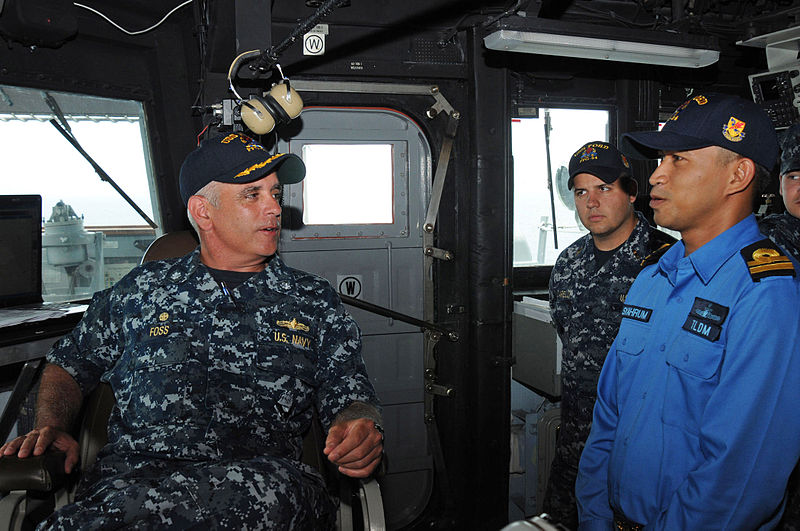
CCG 3901 is the world's biggest coast guard cutter. The Chinese patrol craft was first deployed to the South China Sea in May 2017. Analysts believe it was specfically built and designed to intimidate ASEAN countries who dispute China's control of the infamous "nine-dash-line" which China considers part of its zone of control in the disputed waterway. Coast guard cutters are usually only lightly armed with small cannon, machine guns and defensive systems. However, this Chinese warship includes twin 76mm H/PJ-26 rapid-fire naval guns, two anti-aircraft guns and two other cannons that make it more than a match for most ASEAN navies.
The ship's deployment has been a wake-up call to Malaysia and other countries in the ASEAN region.
"Our naval ships under the Royal Malaysian Navy are smaller than the Coast Guard vessels from China," said Foreign Minister
Saifuddin Abdullah in an appearance said before the Malaysian parliament earlier this year, "We would not want (conflict) to happen, but our assets ... need be upgraded so we are able to better manage our waters should there be a conflict between major powers in the South China Sea," he said.
At 12,000 tons the CCG 3901 is larger than any vessels in the Malaysian Navy. It is also far larger than a typical coast guard cruiser the world over. For example, the Ticonderoga class guided-missile cruisers deployed by the United States have a displacement of the 9,800 ton.
China's naval building program has focused on building "largest in class" type vessels. For example, new class Chinese guided-missile destroyers have a displacement of 10,000 tons, making them more substantial than United States' Arleigh Burke-class (9,800-ton displacement) and similar in size to Japan's Atago class (10,000) though smaller than South Korea's Sejong the Great Class (11,000) -- as the Chinese media has been quick to point out.
A soon to be released White Paper will guide Malaysian defense forces over the next ten years as they prepare to counter China's building program and other defense challenges. This paper will include the Malaysian Navy's "15-to-5 concept" that is an application of the idea "less is more" in strategic terms.
This modernization plan was crafted by RMN Chief of Navy Admiral Kamarul and was unveiled last year. That plan calls for reducing the number of classes in the Royal Malaysian fleet from 15 to just 5 to streamline and focus on critical capacities by 2050. Admiral Kamarul has since retired, and it will be up to his successors to implement the plan.
The first phase of the plan will be completed by 2030 with a second phase to be completed by 2050. The plan envisions that the Royal Malaysian Navy of 2050 will include 12 littoral combat ships (LCS); 18 littoral mission ships (LMS); 18 patrol vessels (PV); three multi-role support ships (MRSS) and four submarines. On that last point, Malaysia has already made some progress and has deployed two Scorpène-class submarines which were commissioned in 2009. Malaysia has also set-up forward bases on at least two disputed atolls in recent decades.
Other upgrades to the Malaysian fleet are ongoing. Last month a German technology firm Rohde & Schwarz upgraded a variety of communications systems on Malaysia's two Lekiu class frigates. The Foreign Minister's appeal to parliament for more funding may not have gone unheeded as Malaysia has committed itself to a modest rise in its defense spending. A tender to build 18 fast interceptor craft for the Royal Malaysian Navy has attracted the interest of four public companies.
Costs remain a challenge for Malaysia. As such, the country is considering swapping palm oil with foreign countries for defense equipment. Malaysia has engaged in such swaps in the past with Russia which may send Malaysia MiG-35s in exchange for Malaysian palm oil.
Subscribe to our evening newsletter to stay informed during these challenging times!!